Lettuce (Lactuca sativa) is a vegetable that belongs to the family Asteraceae or Compositae (the aster, composite, daisy, or sunflower family) valued majorly for its leaves, but at times for its stems or seeds for oil production.
This vegetable is eaten in salads, in soups, wraps, sandwiches, and other dishes. You can also grill, stir fry it alone or with other foods.
Can rabbits eat lettuce?
No, and Yes. It depends on the specific type of lettuce. Not all types of lettuces are good or safe for bunnies. For the safe varieties, ensure they have them in moderation, as a part of their leafy greens.
What types of lettuce can rabbits eat?
When deciding on the kids of lettuce that rabbits can eat, look at their nutritional content. The general rule of thumb is the dark-green leaved varieties are more nutritious while the light-colored have minimal nutrients.
Secondly, avoid those that have lactucarium as this milky sap from these plants is harmful to not only bunnies but also humans and other animals. Let us now see which ones are safe and which ones are harmful.
Can rabbits eat romaine lettuce (cos lettuce)?
Yes. Rabbits can eat romaine lettuce as a part of leafy greens you give it your rabbit, including the violet cultivar, in moderation, a few times a week. Just include it in your vegetable mix. Like other dark-green leaved varieties, it is a good source of vitamin A, folate, and vitamin C.
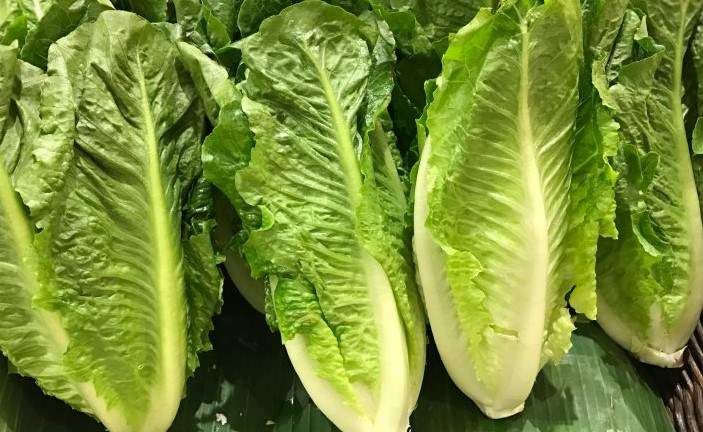
Also, it has a smaller amount of calcium, iron, potassium, and phosphorus, as well as antioxidants that may help prevent chronic illnesses and fight some cancer forms.
Vitamin C is good for healthy and strong bones, and teeth and vitamin K will ensure no bone mineral loss. Also, beta-carotene (a form of vitamin A), which is a potent antioxidant that will support good vision, support reproductive health, and cell growth, among other benefits.
Can rabbits eat iceberg lettuce?
No. Rabbits shouldn’t iceberg lettuce (head lettuce) or any other that is light-colored since it has lactucarium, which is harmful to your furry friends.
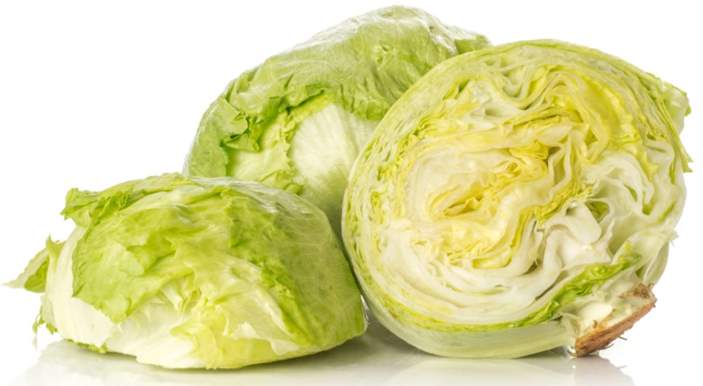
Also, if you look at its nutritional composition, it is low in nutrients, and it is majorly water, i.e., higher water than other types and less flavorful. Therefore, there is no point in including it in your rabbit diet.
However, it does have some small amounts of potassium, folate, zinc, calcium, vitamins A, and K, a reason why you may have it on your table.
Butterhead lettuce
Rabbits can eat Butterhead lettuce, a tendered textured and sweet flavored variety, also known as round, Bibb or Boston lettuce as part of their leafy veggies occasionally. Looking at its nutritional value, it has is a good source of vitamin A (beta-carotene), folate, and vitamin K.
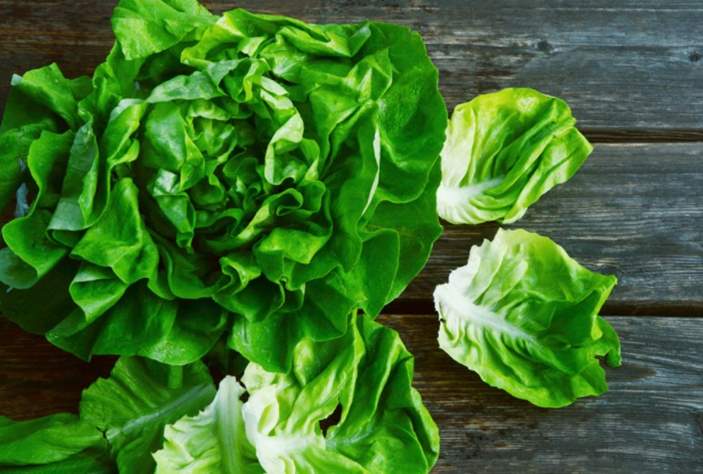
Also, it has some iron, thiamine, riboflavin, vitamin B6, manganese, potassium, phosphorus, magnesium, among others, making it the right choice for your furry friend. You can make it part of their vegetable mix, like once a week.
Green Leaf, red leaf or oak lettuce
Also known as looseleaf, bunching, or cutting lettuce, these cultivars have leaves that bunch loosely and don’t have heads. They are the most popular type cultivated for use as a salad, mostly green leaf lettuce. There are others are the oak and red leaf lettuce. All these three varieties are ok for rabbits. Include them as part of their vegetable mix, but one at a time, occasionally.
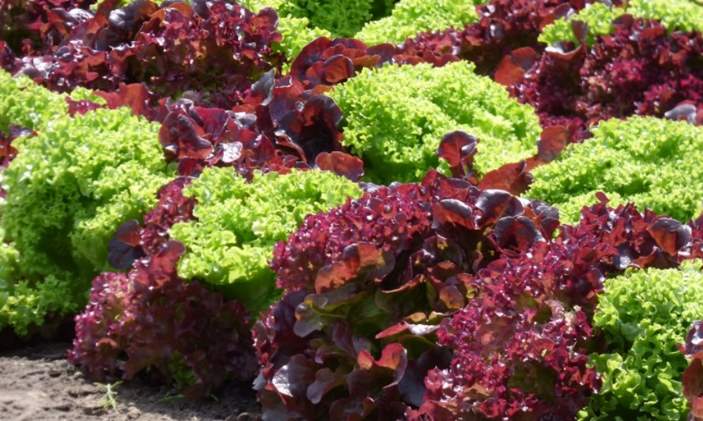
Common cultivars of the red leaf include Lollo Rossa, or New Red Fire, Red Sails, Redina, Galactic, or Benito. They are very high in vitamin K, rich in vitamin A (beta-carotene), and has smaller amounts of manganese, folate, vitamin B6, thiamine, riboflavin, among others.
No to wild lettuce
Rabbits shouldn’t eat wild lettuce (Lactuca virosa) since it has lactucarium, a milky fluid that is potentially toxic to rabbits. Also, avoid any other wide variety. People who ingest lactucarium may be dizzy, vomit, and diarrhea.
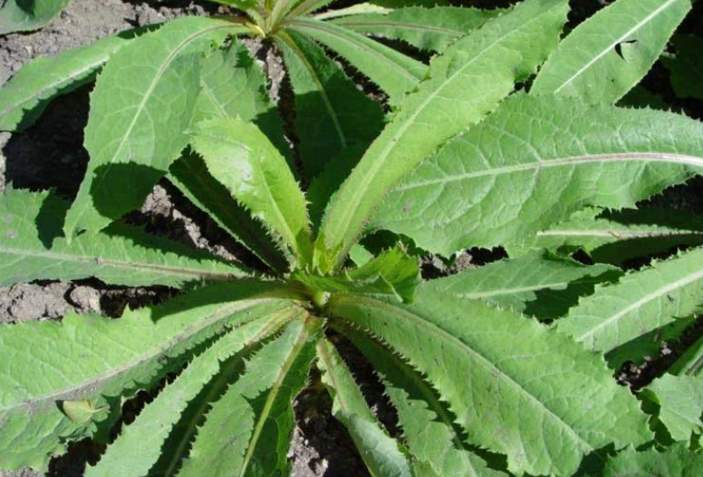
Other varieties
The other varieties are Summercrisp, stem (stem, celery, Chinese or asparagus lettuce or celtuce), and oilseed (grown for seeds). They are safe for bunnies and should be given in moderation, occasionally.
However, if offering them celtuce, ensure you give them a small amount as a treat while the others can be part of their leafy veggies.
Is lettuce good for rabbits?
It all depends on which specific type. Except for the wild and iceberg or any other that are low in nutrients or have lactucarium, the others are good. However, the romaine variety is the best choice.
However, if you compare them with other leafy greens, there are many more nutritious veggies you can include in your rabbit’s diet. Therefore, let your bunnies eat them occasionally.
Giving lettuce to your rabbits
Bunnies should have a cupful of 5-6 different leafy greens for every two pounds of their weight. In your mix, you can include safe lettuces as one of the vegetables in your mix.
Also, besides romaine, which you can include more often, like 2-3 times a week since it is nutritionally superior, make the others occasional inclusions like once a week.
Finally, don’t forget to slowly introduce any new food gradually over a week, starting with a minimal amount to give these animal’s sensitive tummies to get used to the vegetable or food. Otherwise, they may end up with stomach problems, diarrhea, gas, bloating, and so on.
Best lettuce alternatives
Some of the veggies that you can give your bunnies more since they are more nutritive include the following:
- Beet greens
- Swiss chard
- Mustard greens
- Watercress
- Carrot tops
- Kohlrabi
- Collard greens
- Bok choy
- Endive
- Okra leaves
- Wheatgrass
Don’t forget to look at their oxalic levels and calcium levels and only include one type high in ether these two.
Don’t forget the right diet?
As you try to vary the diet, your furry friends have, ensure they eat at least 80% grassy hay. There are many excellent brands of grassy hays to buy.
All the rest of the foods need moderation, with high fiber pellets accounting for about 5% of their diet and fresh foods 10-15%. Make leafy greens the bulk of the 10-15%.
Finally, treats like fruits, non-leafy veggies, flowers, herbs, or commercial ones shouldn’t exceed 5% of the total calorie intake.
